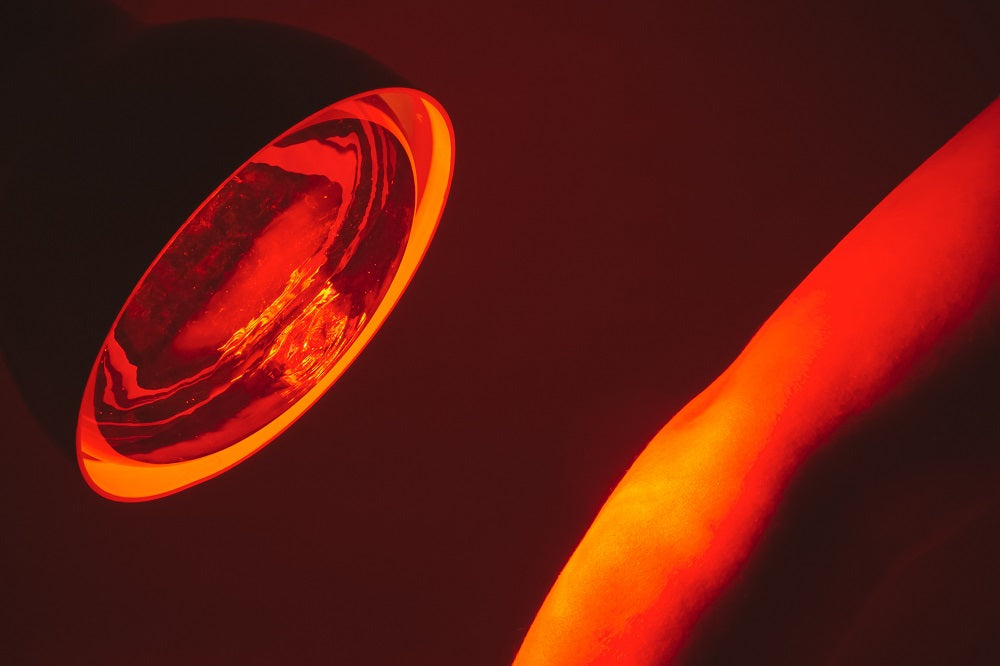
Red Light Therapy for Gut Health: How It Works & More
Table of Contents
- What is Red Light Therapy?
- The Gut-Brain Connection and Overall Well-being
- Red Light Therapy and Gut Health
- The Role of Red Light Therapy in Reducing Inflammation
- Enhancing the Gut Microbiome with Red Light Therapy
The gut is often referred to as the "second brain" due to its profound impact on our overall well-being. A healthy gut is essential for optimal digestion, nutrient absorption, and immune function. When the gut microbiome is imbalanced, it can lead to inflammation, digestive issues, and even affect mental health. While probiotics have long been recognized for their role in promoting gut health, there is another emerging natural remedy that shows great promise - red light therapy.
What is Red Light Therapy?
Red light therapy, also known as photobiomodulation (PBM) or low-level light therapy (LLLT), involves exposing the body to low levels of red and near-infrared light. This light penetrates the skin and stimulates cellular activity, promoting healing, reducing inflammation, and relieving pain. Red light therapy for wound healing, muscle recovery, and skin rejuvenation benefits like red light therapy for wrinkles, stretch marks, and other various conditions have been explored.There has even been research on red light therapy for dogs and animals, and now, research suggests that red light therapy can also support gut health.
The Gut-Brain Connection and Overall Well-being
To understand how red light therapy can benefit gut health, it's important to explore the gut-brain connection. The gut microbiome, a complex community of bacteria and microorganisms in our digestive tract, plays a crucial role in our mental and physical health. Imbalances in the gut microbiome have been linked to various diseases, including metabolic disorders, cardiovascular issues, and even brain disorders like Alzheimer's and Parkinson's diseases.
Understanding the Gut Microbiome
The gut microbiome consists of trillions of bacteria, fungi, and other microorganisms that reside in our intestines. These microorganisms perform essential functions such as breaking down food, producing vitamins, and modulating our immune system. A healthy gut microbiome is characterized by a diverse range of bacterial species that work together to maintain balance and promote overall well-being.
Impact of Gut Health on Mental and Physical Health
The gut-brain axis is the bidirectional communication system between the gut and the brain. This connection allows the gut microbiome to influence our mental and physical health. Research has shown that imbalances in the gut microbiome can contribute to conditions such as anxiety, depression, and even neurodegenerative diseases. Additionally, gut health has been linked to metabolic disorders, autoimmune diseases, and cardiovascular health.

Red Light Therapy and Gut Health
With the understanding of the gut-brain connection and the importance of gut health, let's explore how red light therapy can support digestive health and promote a balanced gut microbiome.
How Red Light Therapy Supports Digestive Health
Red light therapy has been shown to have several beneficial effects on digestive health. One of the primary mechanisms by which red light therapy supports gut health is by reducing inflammation.
Reducing Inflammation
Inflammation in the gut can lead to a range of digestive issues, including bloating, gas, and discomfort. As seen in the benefits of red light therapy for acne, red light therapy has been found to have anti-inflammatory properties, helping to calm and soothe the gut. By stimulating cellular activity and promoting tissue repair, red light therapy can reduce inflammation in the gut and alleviate symptoms associated with digestive disorders.
Enhancing the Gut Microbiome with Red Light Therapy
The gut microbiome plays a crucial role in maintaining gut health and overall well-being. Recent studies have shown that red light therapy can have a positive impact on the gut barrier and microbiome.2 Researchers have observed that red and near-infrared light delivered to the abdomen can alter the gut microbiome in a potentially beneficial way.2 This exciting finding suggests that a red light therapy device could be used as a tool to restore a healthy balance of gut bacteria and promote a diverse microbiome.

The Role of Red Light Therapy in Reducing Inflammation
Inflammation is a common underlying factor in many digestive disorders, including inflammatory bowel disease (IBD), irritable bowel syndrome (IBS), and leaky gut syndrome. Red light treatment has been shown to have powerful anti-inflammatory effects, making it a promising therapy for individuals with these conditions.
Reducing Gut Inflammation
Red light therapy treatments stimulate the production of anti-inflammatory cytokines, proteins that regulate the immune system and reduce inflammation. By increasing the levels of these anti-inflammatory cytokines, red light therapy helps to calm the inflammatory response in the gut, reducing symptoms and promoting healing.
Healing Gut Tissue
In addition to reducing inflammation, red light therapy devices also promote tissue repair in the gut. The low-level light energy penetrates the cells and stimulates mitochondrial activity, boosting cellular function and enhancing the body's natural healing processes. This can be particularly beneficial for individuals with conditions that cause damage to the gut lining, such as ulcerative colitis or Crohn's disease.
Enhancing the Gut Microbiome with Red Light Therapy
The gut microbiome is a complex ecosystem of microorganisms that live in our intestines. When the microbiome is imbalanced, it can lead to digestive issues and contribute to the development of various diseases. Red light therapy has shown potential in promoting a healthy gut microbiome.
References:
- Rondanelli M, Perdoni F, Peroni G, et al. Ideal food pyramid for patients with rheumatoid arthritis: A narrative review. Clin Nutr. 2021;40(3):661-689. doi:10.1016/j.clnu.2020.08.020
- Liebert A, Bicknell B, Johnstone DM, Gordon LC, Kiat H, Hamblin MR. "Photobiomics": Can Light, Including Photobiomodulation, Alter the Microbiome?. Photobiomodul Photomed Laser Surg. 2019;37(11):681-693. doi:10.1089/photob.2019.4628
- Liebert A, Bicknell B, Johnstone DM, Gordon LC, Kiat H, Hamblin MR. "Photobiomics": Can Light, Including Photobiomodulation, Alter the Microbiome?. Photobiomodul Photomed Laser Surg. 2019;37(11):681-693. doi:10.1089/photob.2019.4628
- Rondanelli M, Perdoni F, Peroni G, et al. Ideal food pyramid for patients with rheumatoid arthritis: A narrative review. Clin Nutr. 2021;40(3):661-689. doi:10.1016/j.clnu.2020.08.020




